Olympia : a unique symbol of peace and the nobility of competition

In the beautiful valley of the Alpheios River, the most celebrated sanctuary of ancient Greece flourished, dedicated to Zeus, father of gods and mortals.
Here, the greatest Panhellenic games were born in honor of the god—the Olympic Games—which continue to illuminate humanity with their radiance and glory from antiquity to the present day
radiance and glory from antiquity to the present day
Ancient Olympia stands as a testament to the pinnacle of Greek civilization, where athletic excellence, religious devotion, and artistic achievement converged in perfect harmony. Within the Sacred Altis, the holy grove enclosed by a peribolos wall, magnificent temples, treasuries, and monuments created a landscape that inspired awe in ancient pilgrims and continues to captivate visitors today.
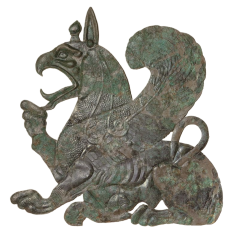
The site is dominated by the majestic Temple of Zeus (470-456 BC), the largest temple in the Peloponnese and considered the perfect expression of Doric architecture. It once housed the Chryselephantine statue of Zeus, crafted by the renowned Athenian sculptor Phidias—a masterpiece counted among the Seven Wonders of the Ancient World during the Hellenistic period.
North of Zeus’s temple stands the Temple of Hera, built around 600 BC and recognized as one of the earliest examples of monumental temple architecture in Greece. These sacred structures, along with numerous other buildings, statues, and monuments, formed the heart of a sanctuary that served not only as a religious center but also as a symbol of Greek unity and cultural identity.
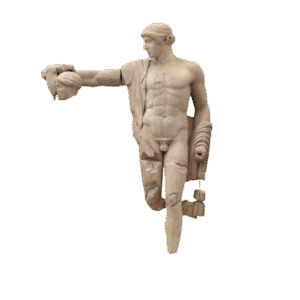
The Olympic Games, reorganized in 776 BC following a Delphic oracle, were held every four years without interruption until 393 AD, when they were abolished by Emperor Theodosius I after the 293rd Olympiad. Protected by the Sacred Truce, athletes and pilgrims from across the Greek world gathered here to compete and celebrate, transcending the frequent conflicts that divided their city-states..
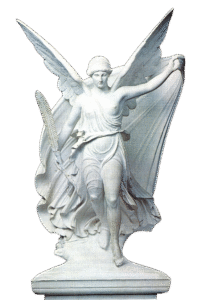
The archaeological treasures of Ancient Olympia remained buried until systematic excavations began in 1875, conducted by the German Archaeological Institute. Today, the site is managed by the Ephorate of Antiquities of Elis under the Greek Ministry of Culture. In recognition of its universal significance, Ancient Olympia was inscribed on the UNESCO World Heritage List in 1989 and is protected within the Natura 2000 network.
We invite you to explore this extraordinary site, where the ideals of athletic excellence, peaceful competition, and human achievement were born—ideals that continue to inspire the world through the modern Olympic Games.
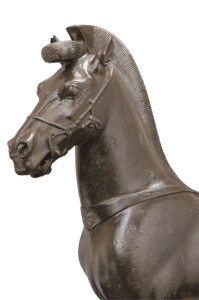
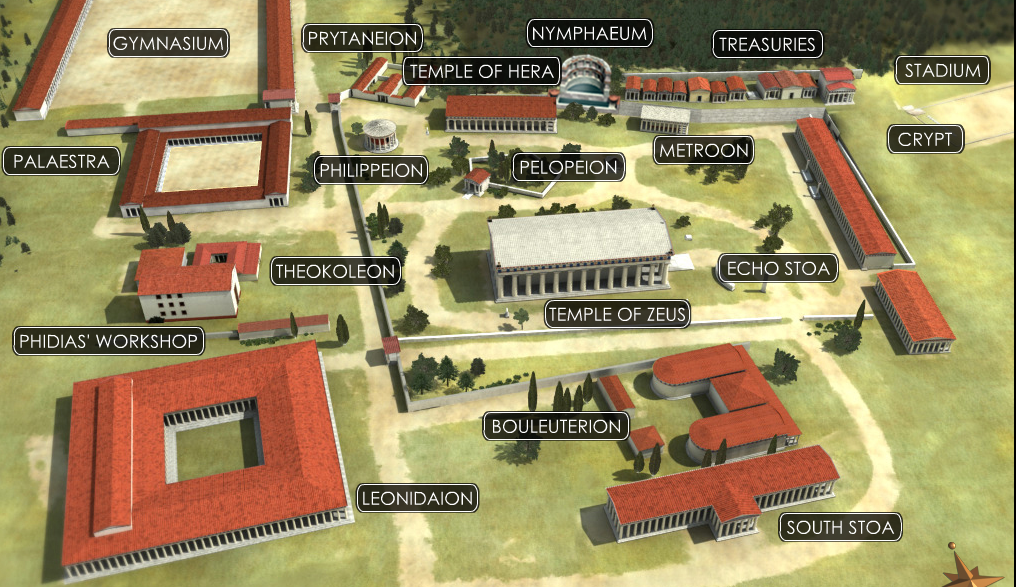
The Temple of Zeus
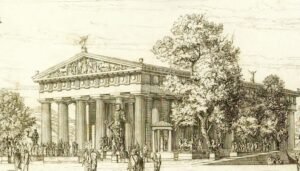
The Temple of Zeus at Olympia, designed by Libon of Elis (ca. 470–456 BC), was the grandest expression of Doric architecture in the Peloponnese. Within its cella stood Pheidias’ colossal statue of Zeus, made of gold and ivory, one of the Seven Wonders of the Ancient World.
The Temple of Hera
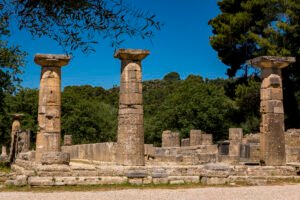
Built around 600 BC, the Temple of Hera is one of the earliest examples of Doric architecture. It housed the Hermes of Praxiteles and played a central role in the worship of Hera and Zeus in Olympia.
The Palaestra

The Palaestra (3rd century BC) was the training ground for wrestlers and boxers in Olympia. Its elegant square courtyard, surrounded by Doric columns, embodied the harmony between body and mind that defined Greek athletic ideals.
The Gymnasion

The Gymnasion (2nd century BC) was the grand training complex for Olympic athletes. With its vast courtyard and covered colonnades, it combined athletic preparation with intellectual and social life in ancient Olympia.
The Philippeion

The Philippeion, built by Philip II of Macedon and completed by Alexander the Great, was a circular temple in Olympia dedicated to their dynasty. Its Ionic colonnade and chryselephantine statues by Leochares made it one of the sanctuary’s most refined monuments, blending political power with sacred symbolism.
The Stadium
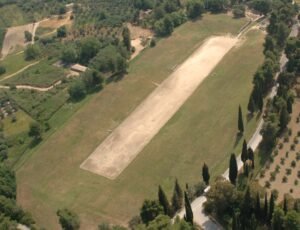
The Stadium of Olympia, built to host the ancient Olympic Games, could hold up to 45,000 spectators. Its 192.27-meter track and the vaulted Krypte passage still convey the grandeur of a space where athletic performance met religious devotion.
Explore more here
South Stoa

The Stadium of Olympia, built to host the ancient Olympic Games, could hold up to 45,000 spectators. Its 192.27-meter track and the vaulted Krypte passage still convey the grandeur of a space where athletic performance met religious devotion.
Explore more here
Pheidias' workshop

The Workshop of Phidias is where the renowned Athenian sculptor created the chryselephantine statue of Zeus—one of the Seven Wonders of the Ancient World. Archaeological excavations uncovered sculptor’s tools, ivory fragments, glass-working materials, and most remarkably, a cup inscribed “I belong to Phidias,” providing direct evidence of the master’s presence. The building’s dimensions precisely matched the Temple of Zeus’s inner chamber, allowing Phidias to work at full scale during the statue’s ten-year creation process.
The Leonidaion
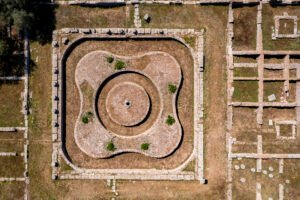
Built around 330 BC, the Leonidaion was the grand guesthouse of Olympia, designed to host VIP visitors during the Games. Its refined plan and dual Doric–Ionic colonnades exemplify the sophistication of late classical architecture.
Explore more here
The Bouleuterion
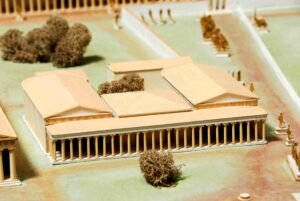
The Bouleuterion, seat of the Hellanodikai, was the council house where athletes swore sacred oaths and where the rules of the Olympic Games were enforced. Its preserved foundations highlight the administrative discipline behind the festival.
The Prytaneion
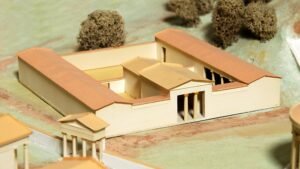
Constructed in the 5th century BC, the Prytaneion housed the eternal sacred flame of Hestia, goddess of the hearth. Here, officials and honored guests participated in ritual feasts and public banquets.
The Echo hall
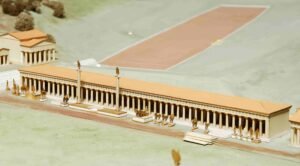
The Echo Hall was a long colonnaded stoa renowned for its seven-fold echo. Located near the stadium entrance, it provided shelter, acoustic performance space, and impressive architectural framing within the Altis.
The Metroon
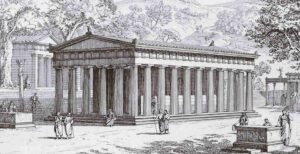
The Metroon was a Doric temple dedicated to the Mother of the Gods. Later, Roman emperors transformed it into a space for imperial worship, marking the shifting religious identity of Olympia.
The Treasuries

A row of small state-built monuments housing valuable offerings dedicated to Zeus, serving as public displays of wealth and rivalry along the Sacred Way.
The Nympheum
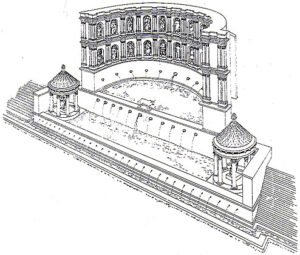
A Roman-period fountain complex commissioned by Herodes Atticus, supplying fresh water to the sanctuary while serving as a display of luxury and imperial patronage